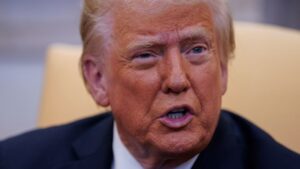The Penny Debate: Are We Witnessing Its Last Days?
In a significant twist in U.S. financial policy, President Donald Trump recently announced a halt to the production of new pennies, claiming this move aims to curb "wasteful" government spending. The announcement, made directly on his Truth Social platform, has sparked discussions across the finance community regarding the implications of this decision and its potential ripple effects.
The Rationale Behind the Decision
President Trump’s comments highlight a growing concern among economists about the cost of coin production. He stated, "For far too long the United States has minted pennies which literally cost us more than 2 cents." The sentiment is clear: continuing to produce a coin that costs more than its face value is, in effect, financial folly—a viewpoint we’ve echoed here at Extreme Investor Network.
A Costly Minting Process
To put things into perspective, the U.S. Mint reported that in 2024, each penny cost approximately 3.69 cents to produce, marking the 19th consecutive year where production costs exceed the actual value of the coin. If pennies are becoming burdensome, it’s worth considering the nickel’s fate as well. The Mint also revealed that every nickel costs about 13.78 cents to mint, casting doubt on the future of this coin as well.
Legal Controversy: The Authority to Halt Production
It remains unclear whether President Trump has the authority to stop penny production outright, as the power to mint coins is reserved for Congress according to the U.S. Constitution. However, federal law does empower the Secretary of the Treasury to issue coins as needed—setting the stage for potential legal debates if this order faces pushback.
Just recently, Wall Street analyst Jaret Seiberg from TD Cowen expressed optimism that such an order could survive judicial scrutiny. This belief suggests we may soon face a tangible shortage of pennies, which adds complexity to the financial landscape. As dealers in finance, it’s imperative to consider how this could force merchants to incur higher costs while navigating interactions with banks over coin procurement.
A Shift Toward Digital Payments
One significant fallout from stopping penny production could be a bolster to the already accelerating trend toward digital payments. Companies like Visa and Mastercard could see renewed support, boosting their stock and further integrating real-time payment networks into everyday transactions. As advocates for innovative investment strategies, we at Extreme Investor Network see this as a pivotal moment for those invested in tech solutions that streamline financial exchanges.
A Broader Economic Perspective
While this decision primarily targets the production of a single coin, it symbolizes a larger trend in the U.S. economy towards efficiency and modernization. Currency production is often taken for granted, but this transition could be a catalyst for deeper discussions on the future of currency, its relevance in a digital age, and how governmental policy can influence market behavior.
Moreover, as we edge closer to a potential shortage of physical coins, it raises essential questions about how businesses will adapt. Will there be a push for digital currencies to fill the void left by the penny and potentially other coinage?
In conclusion, while the penny’s days may be numbered, the discussions surrounding it are only beginning. At Extreme Investor Network, we invite you to stay with us as we explore potential investment opportunities in the changing landscape of finance, as well as how your strategies can be adapted to align with these macroeconomic shifts. Keep your eyes peeled for our upcoming analyses on digital currencies and payment systems—this is just the tip of the iceberg!

